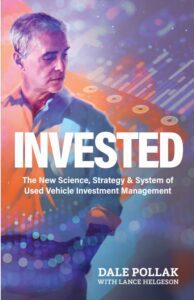As I work with dealers, I’m seeing the return of a practice that largely went away in the past few years as dealers were hungry for new vehicle inventory and consumers  were willing to pay MSRP or more to purchase a new vehicle.
were willing to pay MSRP or more to purchase a new vehicle.
The practice is familiar to most, if not all, dealers: A customer wants to purchase a new vehicle that you really need to sell. Maybe you’re trying to meet a new vehicle sales volume objective or the vehicle’s been in your inventory far too long. The customer has a trade-in that, if you can make the deal, you know you could retail. The customer’s OK with the trade-in value you offered, but they want you to reduce the cost of the new vehicle by $750 to make the deal’s monthly payment work for them. In such scenarios, managers will often grant the $750 discount on the new vehicle and “bump” the trade-in appraisal by the same amount to satisfy the customer and move the new vehicle.
But here’s the rub: While the new vehicle department’s happy to make the deal and move the car, the used vehicle department is left holding the bag. The “bump” has now turned the vehicle into a less-profitable retail unit. If this situation occurs at a dealership using ProfitTime GPS, the bump may well degrade the vehicle’s investment value from Gold to Silver or Silver to Bronze.
One of the reasons bumps to trade-in appraisals occur owes to the fact that, in the minds of dealers and managers, the amount of the bump, which in this case is $750, may not seem like much. This belief may have been true in the past, but in today’s more margin-compressed market, any bump amount can rapidly degrade the profit or ROI potential a vehicle could achieve if the bump never happened.
I would add that the practice of bumping a trade-in appraisal amount isn’t just limited to new vehicle deals. It happens when a customer’s trading a vehicle to purchase a used vehicle, too. The difference, though, is that such used-for-used scenarios don’t pit new and used vehicle managers against each other.
Either way, the retail prospects of the used vehicle you just bumped and acquired only get worse from there. Why? Because the used vehicle manager doesn’t want to face the reality that the fresh trade they just acquired isn’t worth as much as it could have been. What do they do? Many managers will often price the used vehicle as if the bump never happened—that is, they’ll ignore the investment-degrading effects the bump created and price the vehicle as if they own it more right than they really do. Their decision reflects a belief that, if they give the now-distressed vehicle a chance to make gross, it just might happen.
But that’s not how the story typically goes. The reality is that when the manager prices the vehicle to get gross, they often price the vehicle too high. Then, the vehicle sits and doesn’t sell. In a few weeks’ time, the used vehicle department now has an even bigger problem on its hands—whatever gross profit or ROI potential the vehicle might have possessed has largely evaporated, and the department’s likely facing a low-gross or net loss on the unit when it sells.
I’m not suggesting that appraisal bumps are bad. However, I would suggest that dealers consider three things about this current practice:
First, I suspect customer requests for discounts on the new or used vehicles they purchase will grow in frequency and size as vehicle affordability continues to strain household budgets.
Second, I would encourage dealers to charge the cost of any bump against the gross of the new or used vehicle that gets the discount. This approach strikes me as a more honest accounting of the discounts.
Third, if the cost of the discount gets applied in the form of a bump on the trade-in, used vehicle managers should stop pretending that the bump didn’t happen as they price the vehicle. The fact is, the bump can turn your fresh trade into a more distressed and risk-prone investment. Therefore, it should be priced to move as quickly as possible to realize whatever gross or ROI potential it might hold.
The post A View of the Rising Cost of Trade-in Appraisal “Bumps” appeared first on Dale Pollak.





